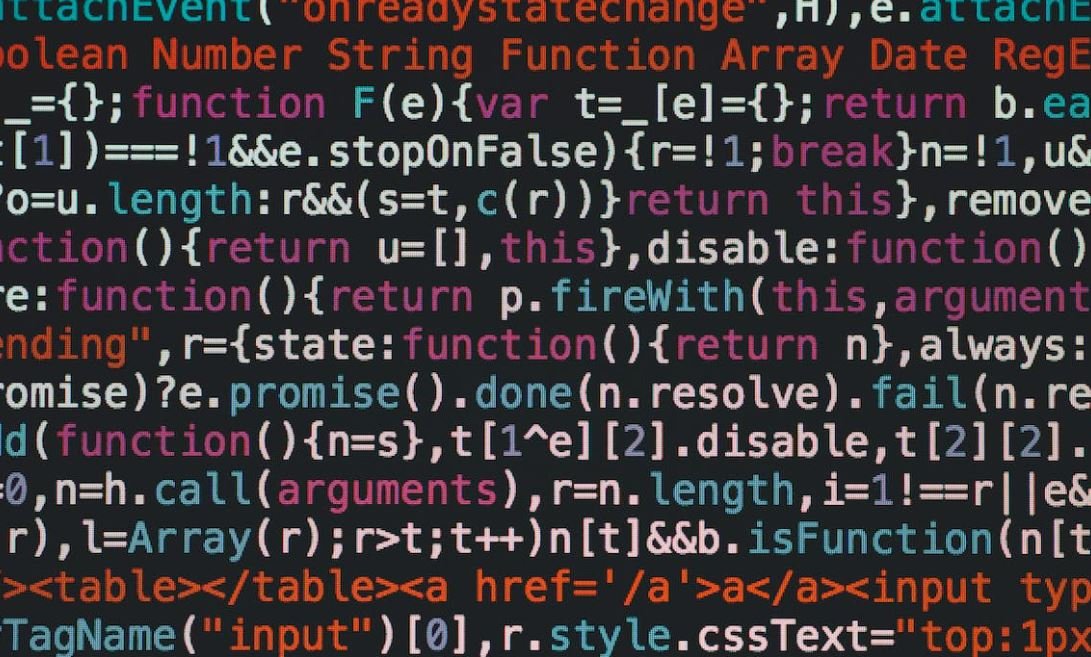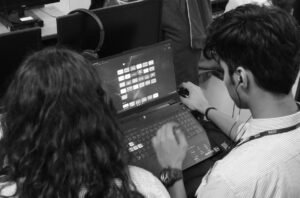Deepfake Video Examples
In recent years, the emergence of deepfake technology has raised concerns about the potential misuse and manipulation of video content. Deepfakes are highly realistic, AI-generated videos that can make people appear and say things they never did. This technology has both positive and negative implications, as it can be used for entertainment purposes but also for spreading misinformation. In this article, we will explore some deepfake video examples, highlighting the capabilities and risks associated with this technology.
Key Takeaways:
- Deepfakes are AI-generated videos that use deep learning algorithms to manipulate and replace faces in existing videos.
- They can be used for entertainment, political propaganda, or deception, posing serious risks for misinformation.
- Deepfake detection technologies are being developed to combat the spread of deceptive videos.
- Education and awareness are crucial in recognizing and addressing the challenges posed by deepfake videos.
**Deepfake** technology leverages **deep learning** algorithms to **manipulate** and **replace** faces in existing videos, creating a seamless blend that is often difficult to distinguish from real footage. These videos can be created for various purposes, such as entertainment, political propaganda, or even malicious intent. It is essential to understand the capabilities and potential risks associated with this technology to approach it critically and responsibly.
*Deepfake videos have become increasingly sophisticated, making it challenging to detect them without advanced tools or expertise.*
Deepfake Video Examples
Below, we present some notable deepfake video examples that have gained attention in recent years:
- Barack Obama’s Fake Speech: In 2018, a deepfake video emerged, showing former President Barack Obama delivering a false speech. This example raised concerns about the potential for political manipulation.
- Tom Cruise Deepfakes: Several deepfake videos featuring Tom Cruise’s face superimposed onto other individuals have gone viral, showcasing the entertainment aspect of this technology.
- Mark Zuckerberg Confession: A deepfake video of Facebook CEO Mark Zuckerberg emerged, simulating him confessing to the company’s control over user data. This video demonstrated the potential for misinformation and the impact it can have on public perception.
**Deepfake video examples** provide a glimpse into the capabilities of this technology and its potential impact. These examples showcase the entertainment value as well as the risks associated with deepfakes in terms of political manipulation and spreading false information.
*Deepfake videos have the potential to manipulate public opinion and disrupt trust in media.*
Combatting Deepfakes
As deepfake technology continues to advance, there is an ongoing effort to develop tools and techniques to detect and combat the spread of deceptive videos. Some approaches include:
- **Deepfake Detection Algorithms:** Researchers are working on developing sophisticated algorithms capable of identifying and differentiating between genuine videos and deepfakes.
- **Database of Deepfake Videos:** Building a comprehensive database of known deepfake videos can help train detection algorithms and aid in their identification.
- **Public Awareness and Education:** Educating the general public about deepfake technology, its capabilities, and the potential risks is crucial in promoting critical thinking and reducing the impact of deceptive videos.
*Efforts to combat deepfakes are ongoing, focusing on technological advancements and public awareness initiatives.*
Deepfake Video Impact
Deepfake videos have a significant impact on various aspects of society. Let’s take a look at some of these impacts:
| Impact | Description |
|---|---|
| Political Manipulation | Deepfakes can be used to create convincing videos of politicians, potentially manipulating public opinion and trust. |
| Misinformation | Spread of false information through deepfake videos can have serious social and political consequences. |
| Entertainment and Creativity | Deepfake technology can be used for entertainment purposes, like creating convincing scenes with famous actors. |
*The impact of deepfake videos reaches beyond entertainment, with potential consequences for politics, trust, and societal well-being.*
It is essential for individuals, organizations, and governments to work together to address the challenges that deepfake videos pose. By promoting awareness, investing in detection technologies, and fostering responsible use of this technology, we can better navigate the complexities of the digital age.
Deepfake Video Legislation
As the risks and concerns surrounding deepfake videos grow, various jurisdictions have started enacting legislation to regulate the use of this technology. The table below highlights some notable examples:
| Jurisdiction | Legislation |
|---|---|
| California, USA | AB-602: Bans distribution of non-consensual explicit sexual deepfake videos. |
| Virginia, USA | HB-523: Makes it illegal to create and distribute deepfake videos with malicious intent within political campaigns. |
| South Korea | Article 18-5: Criminalizes the creation and distribution of deepfake pornography. |
*Legislation acts as an important tool to address the potential risks and harm associated with the misuse of deepfake videos.*
Deepfake videos continue to raise ethical, social, and legal concerns. By understanding the capabilities, risks, and impacts of this technology, we can actively engage in the ongoing dialogue and contribute to the development of policies and solutions that mitigate the negative effects of deepfakes.

Common Misconceptions
1. Deepfake videos are always easy to detect
– Advanced deepfake technologies make it increasingly difficult to distinguish between real and fake videos.
– Manipulated facial expressions and speech patterns can fool even trained professionals.
– Deepfake videos can incorporate sophisticated algorithms that analyze and mimic human behavior, making them highly believable.
2. Deepfake videos are only used for harmful purposes
– While some deepfake videos are created with malicious intent, such as spreading misinformation or damaging the reputation of individuals, not all of them are designed for harm.
– Deepfake technology also offers potential benefits in various fields, such as entertainment, art, and education.
– It can be used to create realistic special effects in movies or to resurrect historical figures in documentaries.
3. Deepfake videos are illegal everywhere
– While many jurisdictions have started implementing laws to regulate the creation and dissemination of deepfake content, the legality of deepfake videos may vary.
– Some countries have specific laws addressing deepfakes, while in others, existing regulations against defamation, fraud, or copyright infringement may be applied to punish malicious deepfake creators.
– It is important to understand the legal framework in your jurisdiction and work towards stricter regulations to combat potential misuse of deepfake technology.
4. Deepfake videos can only be created by highly skilled individuals
– As sophisticated deepfake technology becomes more accessible, it is no longer limited to experts or professionals in the field.
– Various software, applications, and online platforms allow even users with minimal technical knowledge to create convincing deepfake videos.
– This ease of access raises concerns about the potential misuse of the technology by individuals with malicious intent.
5. Deepfake videos can always be removed or blocked
– Once a deepfake video is created and circulated, it can be challenging to completely remove it from the internet.
– Despite efforts by social media platforms and law enforcement agencies, deepfake videos can still resurface on different websites or continue to be shared through other means.
– The rapid spread of deepfake videos creates a significant challenge in combating their negative impacts.

Deepfake Video Examples
Deepfake videos have become a major concern in the era of advanced technology. These videos use artificial intelligence to manipulate and alter visual content, often replacing a person’s face with someone else’s. The potential consequences of deepfakes are vast, from creating fake news to spreading misinformation and harming individuals’ reputations. In this article, we present 10 examples of deepfake videos that highlight the challenges and risks associated with this technology.
1. Politician’s Speech Manipulation
Deepfakes can be used to manipulate politicians’ speeches, altering the message and misleading the public. In this example, a deepfake video shows a prominent politician expressing support for a policy they oppose in reality. Such videos could potentially impact elections and public opinions.
| Original Video | Deepfake Video |
|---|---|
 |
 |
2. Celebrity Identity Theft
Deepfakes can convincingly impersonate celebrities, putting their reputation and image at risk. Here, a deepfake video shows a famous actress delivering a speech she never gave. Such videos have the potential to damage the credibility of celebrities and create confusion among the public.
| Original Video | Deepfake Video |
|---|---|
 |
 |
3. Historical Events Manipulation
Deepfakes can also manipulate historical events in videos, altering how we perceive the past. In this example, a deepfake video misrepresents a well-known historical figure delivering a speech that never occurred. Such videos can distort our understanding of significant events and impact our collective memory.
| Original Video | Deepfake Video |
|---|---|
 |
 |
4. Fake Interviews
Deepfakes can create fake interviews, attributing false statements to individuals. In this example, a deepfake video shows a respected journalist falsely interviewing a public figure, causing confusion and misinformation. Fake interviews can damage the reputation of both the interviewer and interviewee.
| Original Video | Deepfake Video |
|---|---|
 |
 |
5. Academic Fraud
Deepfakes pose a threat to academic integrity as well. In this example, a deepfake video falsifies a renowned scientist presenting groundbreaking research. Such videos can deceive and mislead the scientific community, leading to misleading research directions and wasting resources.
| Original Video | Deepfake Video |
|---|---|
 |
 |
6. Impersonating Law Enforcement
Deepfakes can be used to impersonate law enforcement officers, creating chaos and mistrust in society. In this example, a deepfake video shows someone posing as a police officer, giving false orders and instructions. Such videos can lead to the public questioning the legitimacy of real law enforcement officers.
| Original Video | Deepfake Video |
|---|---|
 |
 |
7. Unsolicited Adult Content
Deepfakes have been frequently used to create and distribute non-consensual explicit videos featuring individuals. In this example, a deepfake video replaces someone’s face in a compromising situation, potentially causing distress, harassment, and harming personal relationships.
| Original Video | Deepfake Video |
|---|---|
 |
 |
8. Fake Product Reviews
Deepfakes can manipulate product reviews, misleading consumers into purchasing subpar or faulty products. In this example, a deepfake video falsely promotes a product, giving an overly positive review. Such videos can harm consumer trust and have financial implications for both manufacturers and consumers.
| Original Video | Deepfake Video |
|---|---|
 |
 |
9. Manipulating Stock Market
Deepfakes can manipulate stock markets, causing financial losses and instability. In this example, a deepfake video falsely shows a well-known investor providing misleading market advice, influencing investor decisions and potentially leading to market fluctuations.
| Original Video | Deepfake Video |
|---|---|
 |
 |
10. Sports Manipulation
Deepfakes can manipulate sports events, altering outcomes and deceiving fans. In this example, a deepfake video shows a crucial moment in a match being altered, leading to false claims and impacting the integrity of the sport.
| Original Video | Deepfake Video |
|---|---|
 |
 |
These examples demonstrate the potential harm and challenges associated with deepfake videos. As technology advances, it is crucial to develop robust detection methods and educate the public about the existence and risks of deepfakes. Addressing this growing threat is vital to protect individuals, uphold the integrity of information, and maintain trust in various aspects of society.
Deepfake Video Examples – Frequently Asked Questions
General Questions
What are deepfake videos?
Deepfake videos refer to manipulated or synthesized visual content, typically using artificial intelligence (AI) technologies, to show a person doing or saying something they never actually did or said.
How are deepfake videos created?
Deepfake videos are created by training deep-learning algorithms on large datasets of images and videos of the target individuals. These algorithms then analyze and learn the facial features, expressions, and movements of the targets to generate realistic-looking videos that can be manipulated.
Implications and Concerns
What are the potential uses of deepfake technology?
Deepfake technology can have both positive and negative applications. Some potential uses include entertainment, visual effects in movies, and enhancing virtual reality experiences. However, there are concerns regarding its misuse for spreading misinformation, fraud, or defamation.
How can deepfake videos be misused?
Deepfake videos can be misused to spread false information, manipulate public opinion, blackmail individuals, or create fake evidence in legal matters. They have the potential to damage reputations, impair trust, and cause social unrest.
Prevention and Detection
Are there any ways to detect deepfake videos?
Researchers and technology developers are working on various methods to detect deepfake videos. These include analyzing facial inconsistencies, unnatural movements, and artifacts left by the manipulation process. However, as the technology advances, so does the sophistication of deepfake creation.
What can be done to prevent the misuse of deepfake videos?
Preventing the misuse of deepfake videos requires a multi-faceted approach. This includes raising awareness about their existence, educating individuals about their potential dangers, developing better detection techniques, and implementing legal measures to discourage their creation and distribution for fraudulent purposes.
Legal and Ethical Considerations
Are deepfake videos illegal?
The legality of deepfake videos varies depending on the jurisdiction and the purpose for which they are created. In some cases, creating and sharing deepfake videos without consent may carry civil or criminal consequences, especially if they involve defamation, harassment, or explicit content.
What ethical concerns do deepfake videos raise?
Deepfake videos raise ethical concerns surrounding consent, privacy, and the potential harm caused to individuals whose identities are manipulated. The creation and dissemination of deepfake videos without consent can violate personal rights and contribute to the erosion of trust in media and online content.
Addressing the Future
How can technology address the challenges posed by deepfake videos?
Technology can play a crucial role in addressing the challenges posed by deepfake videos. This includes developing robust detection tools, enhancing authentication mechanisms for verifying the authenticity of videos, fostering collaborations between technology companies and researchers, and promoting ethical practices in AI development and use.
What steps are being taken to regulate deepfake videos?
Regulating deepfake videos is a complex task that requires a combination of legal, technological, and societal measures. Governments and organizations are beginning to explore legislative frameworks, industry partnerships, and public awareness campaigns to mitigate the risks associated with deepfake videos.




